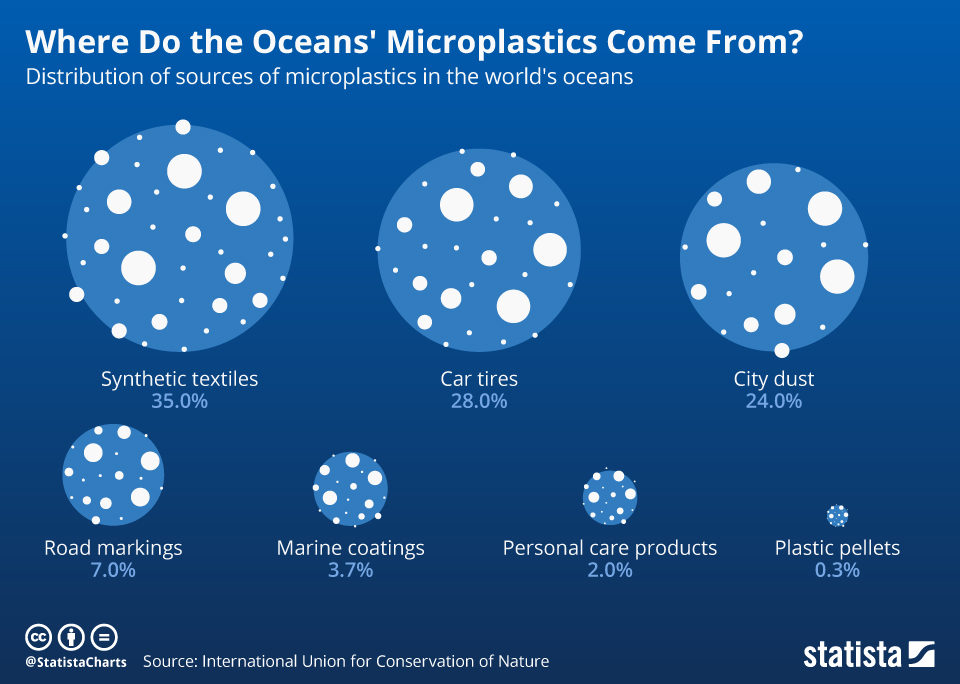Microplastics spell trouble and the world’s oceans are infested by these. What are they and where do they come from? International Union for Conservation of Nature reveals the top offenders:

What are microplastics, why are they bad?
When you see large plastic waste, the immediate reaction is to be concerned or alarmed. We see it in the news and we learn it in class – plastic is harmful to the environment.
Microplastics are another kind of trouble. They are so small (below 5 mm or 0.2 inches in size) that they are not visible. Just because we can’t see it means it cannot harm us. Microplastics can accumulate in the food chain and directly affect human health and being so small, they are harder to detect.
Some microplastics sink and some stay afloat. Being well-dispersed, microplastics can thoroughly affect the existing food chains in our oceans. With this, some started referring to our oceans as a plastic soup. That doesn’t sound like a good meal.
How do they end up in our oceans?
There are two types of microplastics, based on how they are dispersed in the environment,
From our partners:
- Primary microplastics: these are microplastics directly released in the environment.
- Secondary microplastics: these microplastics that are formed from the degradation of larger plastics when exposed to the environment.
To put things into perspective, let’s look at the materials in the list and see how they contribute to the world’s microplastics:
- Synthetic textiles: The abrasion and shedding of textiles in industrial laundries form microplastics. These are discharged in sewage. Eventually, they will find their way into the oceans.
- Car tires: The surface of car tires contains plastics which erode when used. These dust particles can be transferred via wind or rain to the ocean.
- City dust: The abrasion of city objects and infrastructure may carry microplastics which can then be taken by the wind or washed by rain into our waters.
- Road markings: Thermoplastics are used as road markings. These are weathered by vehicles. These can then be carried by wind or rain onto the ocean surface.
- Marine coatings: For protection against fouling and corrosion, marine vessels are coated with plastics. Upon extended use and during repairs, these eventually degrade and introduce microplastics.
- Personal care products: Plastic microbeads are present in personal care and cosmetic products to promote exfoliation, increase product viscosity, and other purposes. These go directly into wastewater streams when they go down the drain.
- Plastic pellets: During manufacturing, transport, and recycling, plastic pellets end up being unintentionally spilled in the environment.
This is yet another reason to be mindful of our use of plastics. It can hurt us in ways that we literally can’t notice.













